proActive is the official industry newsleter of Lotus Engineering. This is issue 2, May / June 2004
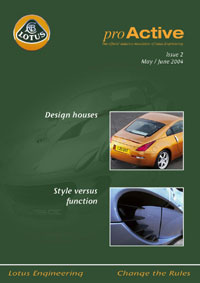
Features
Squeaky clean downhill racing
Design houses
Graduates in focus
Style versus function
Astonâs lucky number
News
UK and Germany announce strategic environmental automotive partnership
UK: Land Rover shows off new Discovery SUV
UK: Continentalâs Ziebart says mild hybrids are âright solution for fuel efficiency gainsâ
CHINA: Government aims for huge boost in automotive exports by 2010
UK: Petrol direct injection technology the next weapon in emissions battle
Style versus Function Feature
A frequently asked question is should style follow function or function follow style?
No compromise approach
The problem often rests with definition of terminology and personal taste. Function can be viewed as restrictive practicality or inspired added value. To its detractors style is fashionable decoration but to its supporters the subject defines the character and soul of a product through manipulating proportion, line, surface, tactility and colour.
The sense of superficiality comes from the fact that the term is associated with fashion and personal appearance, which can be extreme and transient. However it is equally applicable to architecture which often has a timeless permanence.
Pure style in reality can only ever relate to a piece of art (a Henry Moore sculpture for example) where its function, if any, is to convey an emotion to the viewer. With a car or any consumer product there are inevitably varying degrees of functionality that influence the style, not least the interface with the human form. Equally there are very few purely functional products. There is rarely an absolute with function and therefore human instinct is to try and make it look good. Even in F1 where functional performance is everything the cars each have their own visual character. If there was a functional optimum and form followed function then they would all look the same.
Confusion and polarisation of opinion often arises where one attribute has a disproportionate emphasis to the other. Where the aesthetics dominate it may be viewed positively as stylish, or negatively as overstyled depending on the audience taste. Complication is added by the fact that style encompasses many solutions that range from the purity of the Bauhaus through to the flamboyance of art nouveau. Therefore the choice of style and the way it is balanced with function often determines the success and appeal of the product within a particular segment.

Marketing
A designerâs role is increasingly recognised as an important one in differentiating and marketing a car or product. Style and function is addressed with regard to a wide range of activities from overall aesthetic concept through to material colour and finishes. Subtle interpretation can impart an image of âsportinessâ, luxury, quality and even ironically function (Nissan Cube). Many products that are held as intellectually superior because they are function over form have in fact been deliberately âstyled to look not - styledâ. The VW group has used style to great commercial opportunity by deriving cars as diverse as a Skoda saloon and the Audi TT sports coupe off the same mechanical platform. Function is present in both due to technical hardpoints but one sells on functional packaging and the other sells on âmust haveâ style.
An Alfa Romeo sells on its passionate Italian character and the style is a major component of the brand. At the other end of the spectrum a pragmatic traditional Volvo owner would have seen the same car as being intellectually shallow because style dominates engineering. Research suggested that a Volvo owner used to regard style as low on his list of requirements whereas functional attributes top the list.
In the performance car segment the marriage of technical function and style is a compelling proposition. The pilots maxim that âif it looks right, it flies rightâ applies on its own terms to motorcycles and boats.
Lotus has always recognised the value of both form and function and built its brand by successfully developing technically innovative but beautiful cars.
History - emergence of style
The automobile blended style and function from a very early stage. They were primitive technical devices but inherited the flamboyance and status of the horse drawn carriages that they were replacing. Personal transport was still a new luxury so functionality was not an issue and style over function dominated between the late 1920âs to the late fifties.
French coach builders such as Figoni and Falashi produced automobiles that put fashionable Art deco style and streamlining in precedence to true function. The objective was to convey a sense of speed and elegance that reflected the new industrial age. These influences can also be seen in architecture, ships and product design of the same period. At the same time General Motors recognised that as the automobile ceased to be a novelty that there would need to be an impetus to sustain new sales. Harley Earls styling division started to create test plane inspired âstyleâ over function that was to become the hallmark of 1950s American cars. Annual style upgrades were initiated and design obsolescence was born.
In Europe function over form was championed by a group of German designers who emerged from the Bauhaus in the 1920âs. They dedicated themselves to pure rational design that suited modern mass production techniques. A philosophy of âform follows functionâ became associated with a whole collection of designs for âliving machineâ furniture and textiles. Many remain design icons and many designers claim to follow the same rationale. However, though these are designed for function their success is equally due to a unique âstyleâ which did not happen by accident. The misinterpretation of the maxim was recognised by Frank Lloyd Wright, one of their most famous members...
The era of âtest planeâ inspired designs that have little regard for function are long gone but more than ever it remains important for the product to retain âstyleâ. Style differentiates increasingly, technically competent cars. The design process now requires constant reference to legal criteria, mechanical package aerodynamics, manufacturability, cost, occupant package quality and brand relevance. The task of satisfying all these whilst maintaining âstyleâ requires tenacity and skill which is why the term âdesignerâ has largely replaced the more one dimensional sounding âstylistâ.
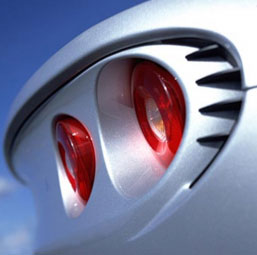
Lotus
Lotus has from its inception balanced a desire for style and function both with body design and technical components. Our core values clearly recognise this:
- Unique and dramatic design
- Innovative use of technology
- Performance through lightweight
- Class leading ride and handling
Colin Chapman applied this to both road and race cars. His view as stated in the Lotus engineering policy of 1975 was that exclusivity should be maintained by trend setting styling whilst the âmost elegantly effective and traditionally Lotus solution is the one with the least number of parts effectively deployedâ
Taste splits opinion as to whether the cars of the 1960âs were more âLotusâ and more functional than todayâs product because the designs appear less frivolous. However this is to confuse functionality with pure or minimalist style. The more sensual style of the Elise 2 has been carefully developed to visually express the dramatic driving experience of the product but also to support the functional requirements of a higher performing modern car. The change is mirrored in racing cars that are no longer the pure cigar shaped streamliners of the 60âs but are complex pieces of sculpture that support aerodynamics, cooling and safety.
Style related characteristics have frequently derived from function.
Conclusion
One thing is clear, although functional performance may ultimately be a necessity and justify ownership, the aesthetics inevitably contribute to our initial perception of a product and create desire. In a commercially competitive world the âstyleâ is often the only way to differentiate two similar products and as with a piece of sculpture it has to promote a set of emotional responses from the consumer that ultimately lead to purchase. Even Volvo, the standard bearers of functionality, recognised that the aesthetics of the vehicle are inevitably the number one reason why many people chose a particular car, and that they could no longer rely solely on their typical academic customer who believed that âthe best medicine was the one that tasted worst â
Source: Russell Carr - Head of Lotus Design
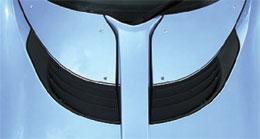
Top Exit Rad: A unique race inspired feature taht functionally contributes to aerodynamic down force.
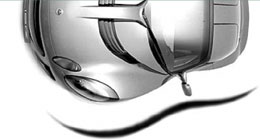
Coke Bottle Shape: the shrink wrapped body gives the car an agile, athletic stance but the 'waisting' of the body also assists ingress egress.
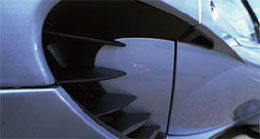
Side Intakes: Aesthetically these add surface drama to the vehicle and let you know that it is mid-engined. Functionally they are essential to cool the engine.

Assymetric Wheel Size: Creates visual drama and good stance but historically was a functional requirement for all high performance mid engined cars.
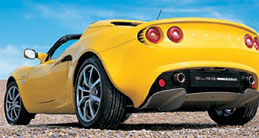
Diffuser: Dramatic racecar image that gives the back of the car distinctive attitude and contributes to signficant aerodynamic downforce.
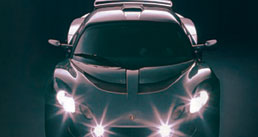
Wraparound Screen: Gives fantastic visibility, minimizes buffeting when the cabin is open and reduces drag.
